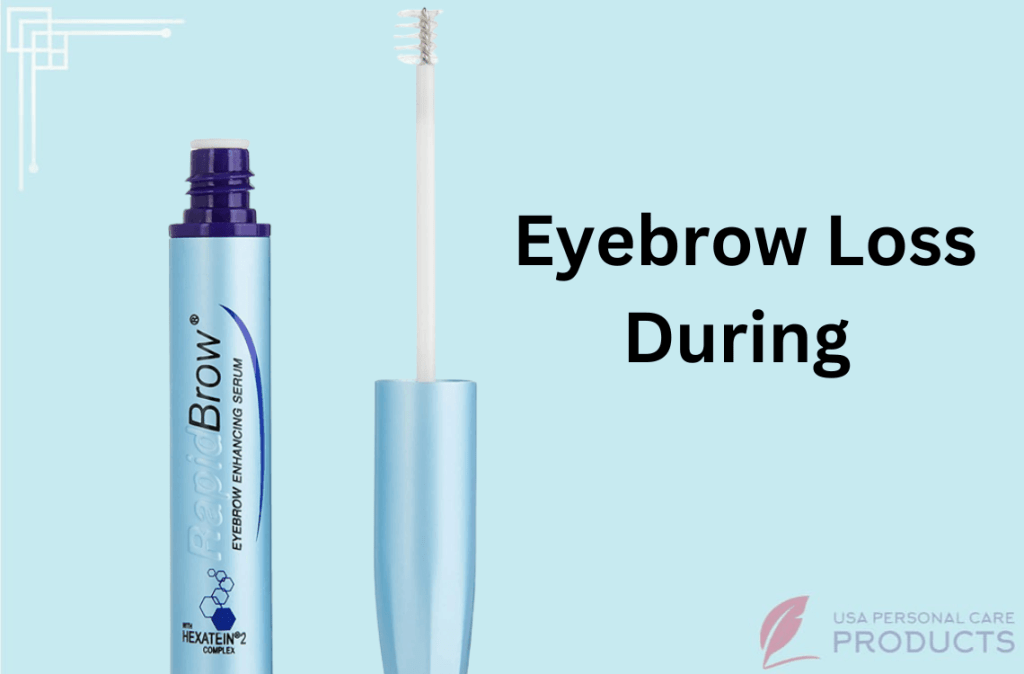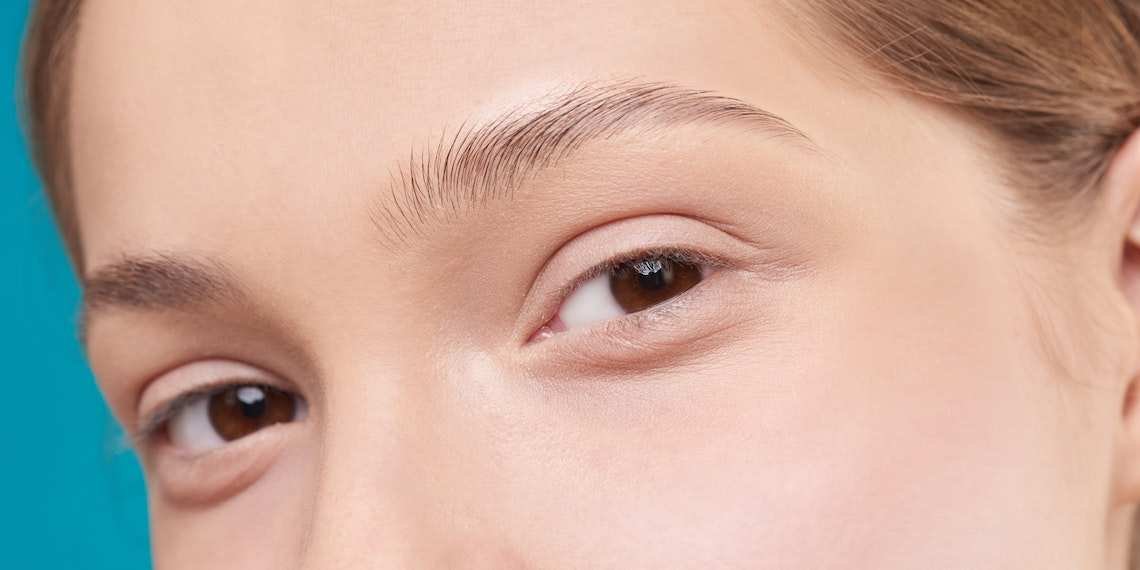
Eyebrow loss during pregnancy is a common concern for many women. Hormonal changes, nutritional deficiencies, stress, and medical conditions can contribute to this condition. Thinning eyebrows, bald patches, and uneven growth are common symptoms of eyebrow loss during pregnancy. Fortunately, there are several ways to prevent and treat eyebrow loss, including maintaining a healthy diet, managing stress and anxiety, and taking prenatal vitamins. This article will explore the causes and symptoms of eyebrow loss during pregnancy, as well as prevention and treatment options to help keep your brows healthy and full.
Causes of eyebrow loss during pregnancy
Causes of eyebrow loss during pregnancy include hormonal changes, nutritional deficiencies, stress, and medical conditions. Understanding these factors is crucial in developing effective prevention and treatment strategies.
- Hormonal changes
Hormonal changes during pregnancy can affect the hair growth cycle, leading to eyebrow loss. Fluctuating levels of estrogen and progesterone can cause hair to enter the resting phase of the hair growth cycle prematurely. This results in hair shedding, including eyebrow hair.
- Nutritional deficiencies
Nutritional deficiencies, particularly of vitamins B and D, can also contribute to eyebrow loss during pregnancy. These vitamins are essential for healthy hair growth and weaknesses can lead to hair shedding. A healthy and balanced diet is vital during pregnancy to ensure an adequate intake of essential nutrients. Prenatal vitamins can also help supplement any deficiencies.
- Stress and anxiety
Stress and anxiety can cause hair loss, including eyebrow loss, through several mechanisms. this stress can trigger hormonal changes, such as increased cortisol levels, that affect hair growth. It can also decrease blood flow to the hair follicles, leading to hair loss. Anxiety can cause hair-pulling behaviors, known as trichotillomania, that can result in hair loss.
- Medical conditions
Medical conditions such as thyroid disorders and autoimmune diseases can also contribute to eyebrow loss during pregnancy. Thyroid disorders can affect hormone levels and disrupt the hair growth cycle, leading to hair loss. Autoimmune diseases, such as alopecia areata, can cause the immune system to attack hair follicles, resulting in hair loss. It is important to consult a doctor if you suspect an underlying medical condition may be contributing to your eyebrow loss during pregnancy.
According to a report by The New York Times, hormonal changes and nutritional deficiencies are common causes of eyebrow loss during pregnancy.
Symptoms of eyebrow loss during pregnancy
Symptoms of eyebrow loss during pregnancy include thinning eyebrows, bald patches, and uneven growth. It is important to identify these symptoms early to prevent further hair loss and promote regrowth.
- Thinning of eyebrows
Thinning of eyebrows is a common symptom of eyebrow loss during pregnancy. Hormonal changes during pregnancy can disrupt the hair growth cycle, causing hair to enter the resting phase prematurely. This results in hair shedding, including eyebrow hair. Nutritional deficiencies and stress can also cause thinning eyebrows. It is important to identify thinning eyebrows early to prevent further hair loss and promote regrowth.
Bald patches on the eyebrows
Bald patches in eyebrows are another common symptom of eyebrow loss during pregnancy. These patches can occur due to hormonal changes, nutritional deficiencies, or medical conditions such as alopecia areata. Bald patches in the eyebrows can be particularly distressing, as they can affect the appearance and symmetry of the face. Identifying bald patches early is important to prevent further hair loss and promote regrowth.
Uneven growth of eyebrows
Uneven growth of eyebrows is another symptom of eyebrow loss during pregnancy. Hormonal changes, nutritional deficiencies, or stress can disrupt hair growth and cause this to occur. Uneven growth can result in eyebrows appearing sparse or patchy, affecting the overall appearance of the face. It is important to address uneven growth early to prevent further hair loss and promote regrowth.
According to a report by CNN, hormonal changes during pregnancy can disrupt the hair growth cycle, causing eyebrow hair loss. Identifying these symptoms early is important for prompt treatment.
Prevention of eyebrow loss during pregnancy
Prevention of eyebrow loss during pregnancy includes maintaining a healthy diet, managing stress, avoiding harsh chemicals, and consulting a healthcare provider for any underlying medical conditions. Early identification and treatment of symptoms can also prevent further hair loss.
- Maintaining a healthy diet
Maintaining a healthy diet is an important preventive measure against eyebrow loss during pregnancy. Eating a balanced diet rich in vitamins, minerals, and protein can help support healthy hair growth, including eyebrow hair. Foods that are beneficial for hair health include leafy greens, nuts and seeds, eggs, and fatty fish. Additionally, taking prenatal vitamins can provide essential nutrients for healthy hair growth during pregnancy. It is important to consult a healthcare provider before taking any supplements to ensure they are safe for pregnancy.
- Managing stress and anxiety
Managing stress and anxiety is another important preventive measure against eyebrow loss during pregnancy. High levels of stress and anxiety can disrupt the hair growth cycle and contribute to hair loss. To manage stress, pregnant women can try relaxation techniques such as deep breathing, meditation, or yoga. Regular exercise can also help manage stress and improve overall health. In some cases, healthcare providers may recommend counseling or therapy to address underlying mental health concerns. Managing stress and anxiety can not only prevent hair loss but also promote overall well-being during pregnancy.
- Taking prenatal vitamins
Taking prenatal vitamins is a recommended preventive measure against eyebrow loss during pregnancy. Prenatal vitamins contain essential nutrients such as folic acid, iron, and biotin that are important for healthy hair growth, including eyebrow hair. However, it is important to consult a healthcare provider before taking any supplements, including prenatal vitamins, to ensure they are safe for pregnancy. Taking excessive amounts of vitamins or minerals can have negative effects on both the mother and baby. It is also important to maintain a balanced diet and not rely solely on supplements for nutrient intake.
- Consulting a doctor for underlying medical conditions
Consulting a healthcare provider for underlying medical conditions is an important preventive measure against eyebrow loss during pregnancy. Conditions such as thyroid imbalances and autoimmune disorders can contribute to eyebrow loss and should be properly diagnosed and treated by a medical professional. Early identification and treatment of underlying medical conditions can prevent further eyebrow loss.
Treatment of eyebrow loss during pregnancy
Treatment options for eyebrow loss during pregnancy include topical solutions, steroid injections, and hair transplantation surgery. However, treatment options may be limited during pregnancy and should be discussed with a healthcare provider.
- Topical treatments
Topical treatments are a common non-invasive option for treating eyebrow loss during pregnancy. These treatments typically involve applying a solution or serum containing ingredients that promote hair growth, such as minoxidil or bimatoprost. However, it is important to consult a healthcare provider before using any topical treatments during pregnancy to ensure they are safe for both the mother and baby. Some ingredients may be contraindicated or have unknown effects during pregnancy, so caution should be taken when using any topical solutions.
- Eyebrow transplantation
Eyebrow transplantation is a surgical option for treating eyebrow loss during pregnancy. The procedure involves taking hair follicles from the scalp and transplanting them into the eyebrow area. It is important to note that healthcare providers may not recommend eyebrow transplantation during pregnancy, even though it can be a permanent solution for eyebrow loss. Surgical procedures carry a risk of complications and should only be considered after consulting a healthcare provider. It is important to weigh the risks and benefits of any procedure, especially during pregnancy.
- Cosmetic solutions
Cosmetic solutions, such as eyebrow pencils, powders, and gels, can be used to temporarily fill in areas of eyebrow loss during pregnancy. These solutions can create the appearance of fuller, more defined eyebrows while waiting for natural regrowth or considering other treatment options. It is important to use cosmetic products that are safe for use during pregnancy and to remove them thoroughly at the end of the day to avoid skin irritation.
Conclusion
Eyebrow loss during pregnancy can be caused by hormonal changes, nutritional deficiencies, stress, and medical conditions. Symptoms include thinning or bald patches in the eyebrows. Seeking medical advice is important for proper diagnosis and treatment. Maintaining a healthy diet, managing stress, and taking prenatal vitamins can help prevent eyebrow loss..


Leave a Reply